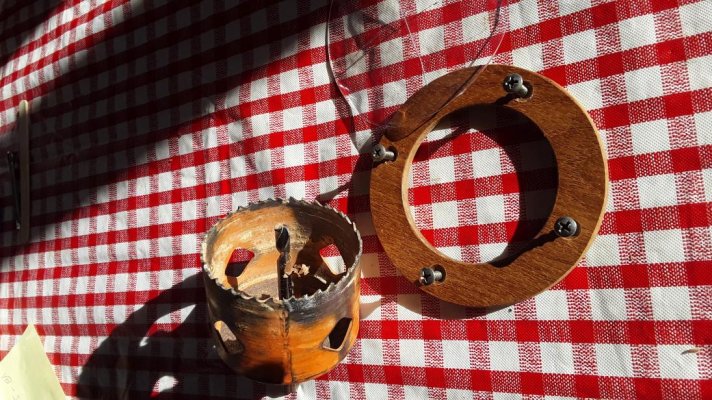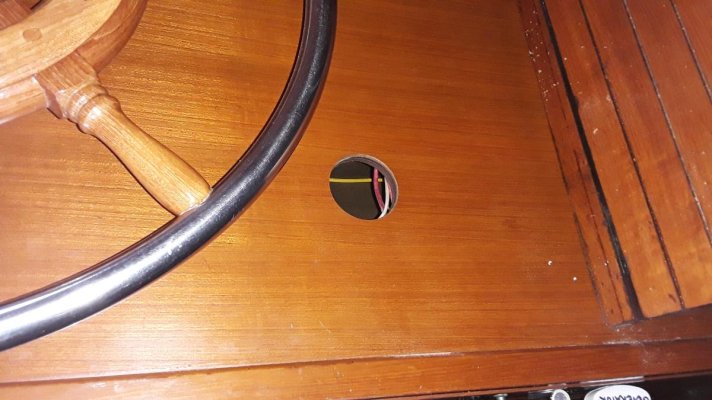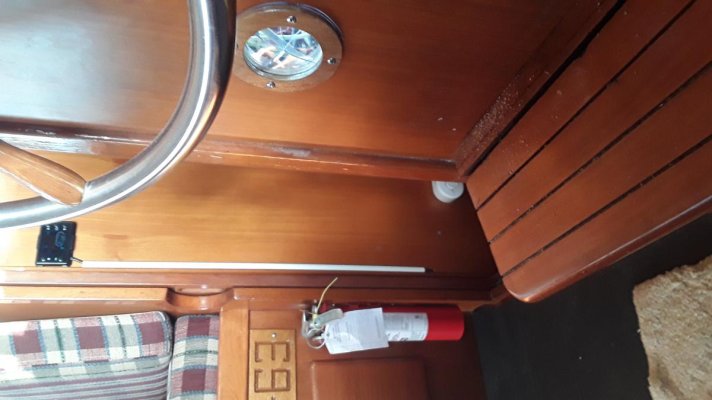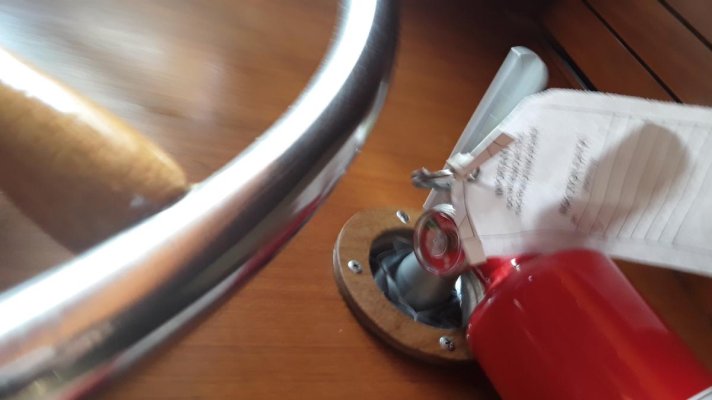Marco Flamingo
Guru
- Joined
- Jan 7, 2020
- Messages
- 1,111
- Location
- United States
- Vessel Name
- CHiTON
- Vessel Make
- Tung Hwa Clipper 30
Installing fire extinguisher ports has been on my project list for awhile. They aren't really expensive ($20-30), but I've seen some iffy reviews, including that some of the larger Halotron nozzles don't fit through and that some are one-time "break the glass" type of fittings. So I thought I'd make my own.
Right behind my lower helm is the "electrical room," a one foot deep, three foot wide, head-high cabinet with all the circuit breakers (12V and 120V). Also in the cabinet is the back side of the hydraulic helm and indications that it has leaked hydraulic fluid for years. Oil soaked wood and 40 year-old electrical connections: What could go wrong?
I had some teak and clear vinyl from other projects. I cut my teak ring using two different sizes of hole saws. Then I used the smaller hole saw to cut a hole where the port was installed. I then cut circles of clear vinyl and cut Xs in them. I used two layers so that they would seal up good but still be easy to both see and poke through. In the pictures, the light in the electrical room is on (because the door is open and the light comes on automatically). If, when underway, there is ever anything lighting up inside the cabinet, that is a bad sign.
A halotron extinguisher is right across the companionway from the extinguisher port. I've seen the mess made by conventional fire extinguishers and decided to go with halotron most places on the boat. The 2.5 pound halogen extinguisher is good for flooding 110 cubic feet. The electrical compartment is 19 cubic feet. Should do the trick.
Next is a port for the engine room. That will require a 5 lb. extinguisher.
Right behind my lower helm is the "electrical room," a one foot deep, three foot wide, head-high cabinet with all the circuit breakers (12V and 120V). Also in the cabinet is the back side of the hydraulic helm and indications that it has leaked hydraulic fluid for years. Oil soaked wood and 40 year-old electrical connections: What could go wrong?
I had some teak and clear vinyl from other projects. I cut my teak ring using two different sizes of hole saws. Then I used the smaller hole saw to cut a hole where the port was installed. I then cut circles of clear vinyl and cut Xs in them. I used two layers so that they would seal up good but still be easy to both see and poke through. In the pictures, the light in the electrical room is on (because the door is open and the light comes on automatically). If, when underway, there is ever anything lighting up inside the cabinet, that is a bad sign.
A halotron extinguisher is right across the companionway from the extinguisher port. I've seen the mess made by conventional fire extinguishers and decided to go with halotron most places on the boat. The 2.5 pound halogen extinguisher is good for flooding 110 cubic feet. The electrical compartment is 19 cubic feet. Should do the trick.
Next is a port for the engine room. That will require a 5 lb. extinguisher.




